10 Major Sea Routes of the World
Sea Routes or Shipping Lanes across the globe are the lifeblood of international trade. They connect the world and propel economies, as 90% of the global trade is conducted via waterways, per the International Maritime Organisation.
Sea Routes are either natural or man-made for the purpose of achieving the shortest, safest and most efficient way to deliver cargo shipments. They often link hub ports and transhipment points along seas, oceans or rivers.
Some shipping routes are busier and more important than others as they connect countries or even continents, cutting transportation costs and saving time.
The busiest sea routes are a testament to the growth of world shipping networks, advancements in maritime technologies, and modern port infrastructure that enable smooth shipping operations.
Let’s have a look at the major sea routes of the world in this article.
1. Panama Canal Route
This man-made canal is said to be one of the busiest and most crucial sea routes around the world. It is 82 kilometres or 51 miles long and links the Atlantic and the Pacific Oceans after it cuts through the Isthmus of Panama.
If not for the canal, ships would have to go around the Cape Horn and the southern tip of South America. Hence, the Panama Canal saves at least 2000 to 8000 nm in every voyage.
The Panama Canal enables maritime trade between Asia and the United States, especially Asia and the east coast ports of the U.S. Around 12000 to 15000 ships pass through the Panama Canal annually.
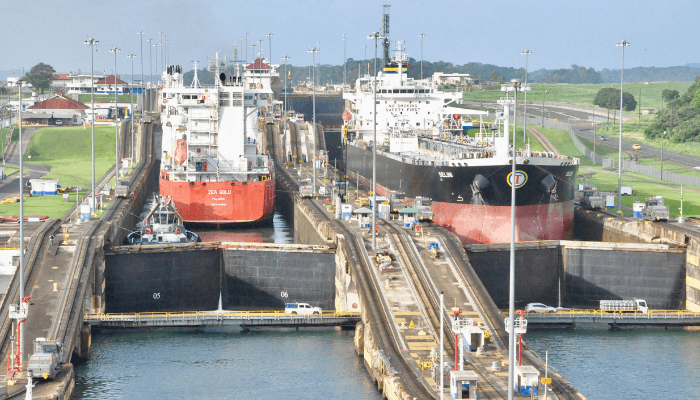
Its construction was a challenge and began 119 years ago in 1904. It was completed in 1914. During the construction period, Columbia, France and the U.S. controlled the surrounding area. In 1881, France began work on this strategic project but had to halt due to technical problems the engineers encountered and workers’ high death rates.
In 1904, the U.S. took over the challenging task and controlled the canal and the Canal Zone until it was given to Panamana in 1999. The Panama Canal Authority presently operates it.
The initial locks are 33.5 m broad, and a third and wider locks lane was built from 2007 to 2016, which allowed bigger NeoPanamax vessels to transit the canal.
Per reports, around 259,837,318 metric tons of goods, including coal, minerals, metals, grains, crude oil, fuel, and chemicals, passed through the canal in 2020. However, the Panama Canal has been imposing several restrictions, including cutting down on daily ship transits due to a prolonged drought in the nearby river, which has also impacted its revenue.
2. Suez Canal Route
One of the most popular shipping lanes, this artificial waterway connects the Mediterranean and the Red Seas via the Isthmus of Suez. This 193.30 kilometres long sea route is the fastest and most direct route for maritime trade between Europe and Asia. Construction commenced in 1858, 164 years ago and ended in 1869, i.e. 154 years ago.
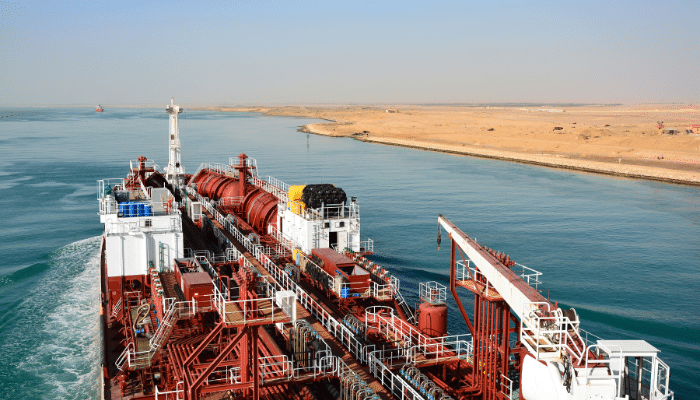
Approximately 19,000 ships passed through the Suez Canal in 2020, 12% of world trade and 30% of world container traffic. It is a vital route for shipping oil and hydrocarbons from Asia and the Middle East to European countries. Around 7 to 8% of the world’s oil and 8% of the world’s LNG pass through the Suez Canal, apart from energy, componentry, and consumer goods, which are the main shipping items.
Due to high trade volumes between Europe and Asia, this route remains quite busy and sometimes experiences congestion, obstructing global trade, like in 2021.
Also, due to the ongoing Russia-Ukraine war, freight forwarders are taking longer routes through the Middle East to avoid passing through this region due to safety issues. Suez Canal implements many tolls on different types of ships according to specific parameters like tiers of containers on the weather deck. Since 1st Nov 2022, lower fees have been granted to LNG carriers.
3. Dover Strait or the English Channel
The Dover Strait lies at the English Channel’s narrowest portion, marking the border between the Channel and the North Sea. It also separates the U.K. from continental Europe.
Dover Strait is within the territorial waters of France and Great Britain; however, the UNCLOS allows ships from other countries to move through the waterway freely.
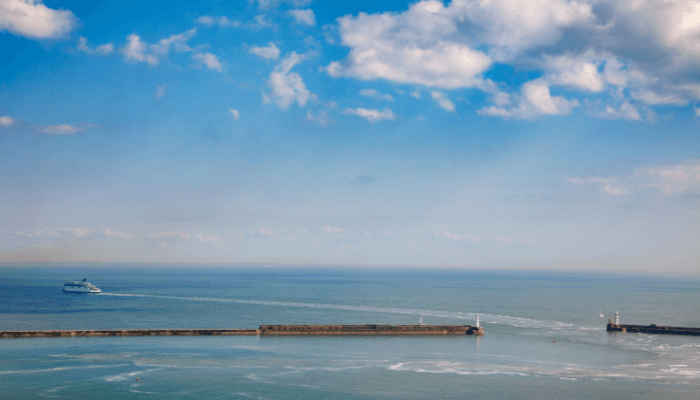
On days with pleasant weather, one can see the coastline of England from France and vice versa with the naked eye. The most famous sight is the White Cliffs of Dover, shoreline buildings on both coasts and lights on either coastline at night.
Most ships between the Atlantic Ocean, North Sea and Baltic Sea pass through this strait rather than the long and perilous lane around the north of Scotland.
Around 400-500 ships pass through it daily, transporting a quarter of goods brought into Great Britain from the E.U. and a third of cargo from the U.K. to the E.U. It cuts transportation time from 210 to just 90 minutes.
4. St. Lawrence Seaway
Spanning some 600 km, the St. Lawrence Seaway is the fastest route facilitating shipping between the American and Canadian waters, especially the upper regions of Canada.
This seaway is a system of locks, canals and channels that serve small ports directly and enable shipping cargo to the final destinations instead of carrying out loading at large and distant port facilities.
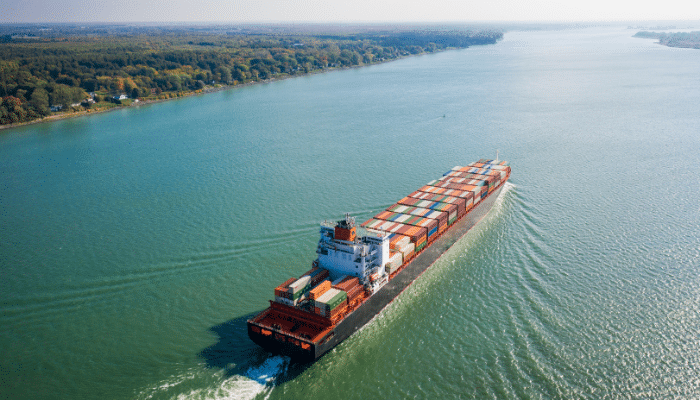
It allows ships to go from the Atlantic Ocean to the Great Lakes of North America and inland to Duluth, Minnesota. It is named after the St.Lawrence River that flows from Ontario Lake to the Atlantic Ocean.
It stretches 1900 miles from Lake Ontario to New York, reaching ports like Wisconsin, Ontario, Vermont, Michigan, Illinois and Ohio.
Around 40 to 50 million tonnes of cargo pass through it annually, comprising bulk, breakbulk, iron ore, mining products, grain etc.
Apart from reducing costs, this seaway has made shipping between American and Canadian ports much safer and boosted trade between the two.
5. Strait of Malacca Route
The 800 km long and 65-250 km wide Malacca Strait is between Sumatra and Peninsular Malaysia. It is the main waterway connecting the Indian and Pacific Oceans, making it a vital sea route to Asia.
It links three major economies of Asia, namely India, Japan, and China, as well as other countries in the region like Indonesia, Malaysia, Singapore, South Korea, Taiwan, Malaysia, and Thailand.
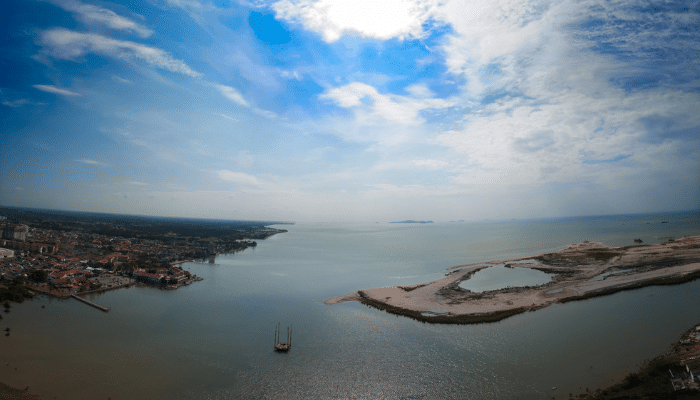
About one-quarter of the global maritime trade passed through this passageway on 50,000 ships. Major trade items are Indonesian coffee, coal, palm oil, machinery, manufactured goods, and packaged food.
It also offers the shortest route between the Persian Gulf and Asian economies, allowing the transportation of massive quantities of oil. Per the U.S. Energy Information Administration, around 61% of petroleum production passes through this route, making it the world’s 2nd biggest oil trade checkpoint.
Also, the trade flows through the Malacca Strait are important for China as it is a gateway for energy products from the Middle East and raw materials from Africa, where China has put billions in infrastructure and mining projects.
6. Strait of Hormuz
Hormuz Strait links the Gulf of Oman with the Persian Gulf, which aids in the faster transportation of goods, especially oil. It is the only sea passage from the Persian Gulf to the open ocean waters and is a strategic maritime chokepoint.
It is crucial for Asian nations like India, Japan, China, South Korea, and Singapore, which depend on it to conduct most of their seaborne trade.
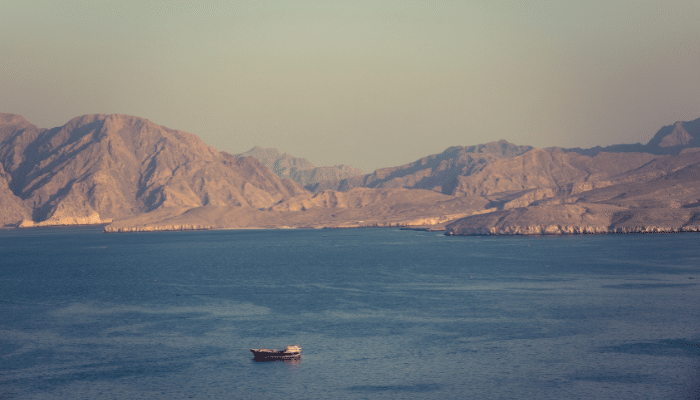
It is 167 km long and has a width ranging between 96 to 39 km. On the strait’s north coast is Iran, while on the south coast is Musadam Peninsula.
A third of the global LNG and 25% of the world’s oil passes through it. It has been used for centuries since its hinterlands had luxury goods without access to trading ports in the region. Memoirs of Mughal Emperor Babur reveal how almonds were taken from Ferghana to Hormuz to reach markets across the world.
Presently, the Hormuz Strait is a busy passageway for ships of all types. To decrease the chances of a collision, vessels moving through the strait adhere to a Traffic Separation Scheme wherein inbound vessels utilise one land, outbound ships use another lane, and each lane is 2 miles wide.
7. Strait of Gibraltar
A natural connection between The Atlantic Ocean and the Mediterranean Sea, the Strait of Gibraltar is one of the busiest sea routes. It also separates Europe from Africa by 13 km of water at its narrowest point, between Spain’s Point Marroqui and Morocco’s Point Cires. Ferries cross between these two continents in about 30 to 40 minutes.
Although the Strait lies in the territorial waters of Spain, Morocco and Gibraltar, per the UNCLOS, international ships and aircraft can freely cross the passageway for continuous transit.
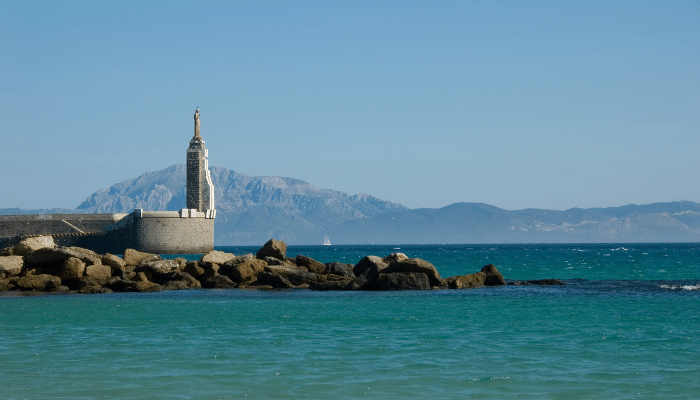
Given its location, it is used for illegal immigration from the African continent to several European countries.
It is a must-visit for nature lovers, especially those who enjoy watching birds. It has been recognised as an Important Bird Area as thousands of birds use it to migrate between the Mediterranean and the Atlantic. One can expect to see Balearic shearwaters, razorbills, Atlantic Puffins, Black-backed gulls, etc.
Also, an orca pod with 36 members lives in the strait, making it one of the few left in West Europe’s waters.
8. The Danish Straits
The Danish Straits connect the Baltic Sea to the North Sea. Throughout history, the Danish Straits have been used as an internal passageway of Denmark. Still, after the losses of its territory, the Fehmarn Belt and Oresund are shared with Germany and Sweden. The Great Belt and Little Belt are still part of Denmark’s territorial waters.
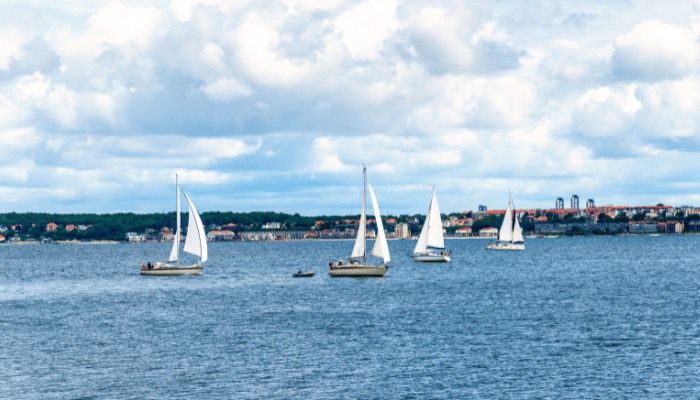
The straits are seen as an international sea route since the 1857 Copenhagen Convention opened them to commercial shipping activities.
The Danish Straits are important for the Russian seaborne exports of oil to several parts of Europe. Around 3.2 million barrels of crude oil per day and petroleum products flow through these straits. However, Russia shifted a major portion of its crude oil trade to the Baltic after the Primorsk Port was opened. However, Russian crude oil does pass through the Danish Straits to reach Scandinavian markets.
9. Bosphorus Strait
Bosphorus is a natural strait in northwestern parts of Turkey and connects the Black Sea to the Sea of Marmara. It is also called the Strait of Istanbul and links Turkey’s European part with the Asian part. It is a strategic waterway that has played a major role in trade for centuries.
This waterway is 31 km long, and its width varies between 730 and 3300 metres only. It is important from a commercial and military viewpoint since it forms a major sea access route for several countries, including Ukraine and Russia.
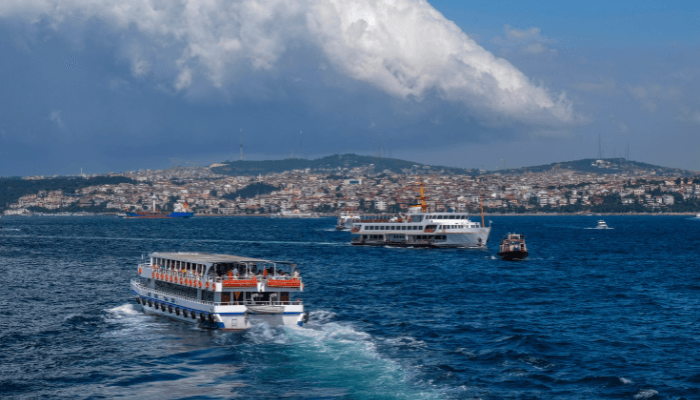
Many ships and oil tankers, apart from passenger boats and fishing vessels, cross this strait every day. It is an important sea route since it links the Black Sea with the world’s oceans and the Dardanelles Strait.
It is difficult to navigate through this Strait since it is quite narrow at some parts and is just half a mile wide at the narrowest point. Hence, ships are advised to move carefully in this strait.
10. Trans-Pacific Route
This route connects Asia with North America and South America. Several goods are transported along this route, including electronics, machinery and textiles. It passes through the Pacific Ocean, and major ports like Tokyo, Shanghai, Long Beach, Los Angeles and Vancouver lie on it.
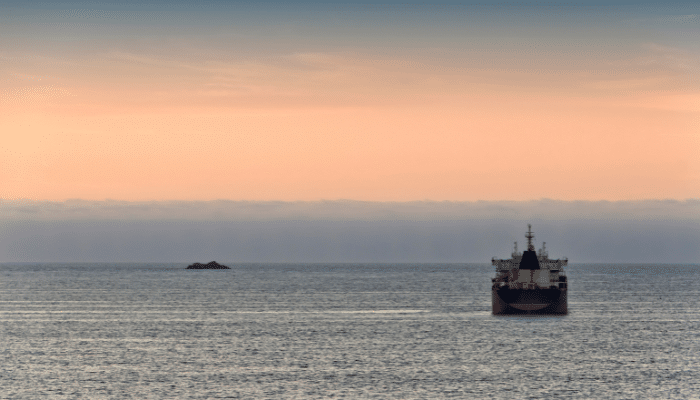
It has 2 branches, namely, the North Pacific Route that links Asian nations like China, Japan and South Korea to the West Coast of the U.S. and Canada and the South Pacific Route that connects Southeast Asia and Oceania to South America’s west coast with the main ports on this route being Peru, Chile and Ecuador.
Conclusion
All the major sea routes in the world enable a smooth and efficient flow of goods and services between continents, enable companies and businesses to get hold of new markets, and allow consumers to get goods produced in the opposite part of the world. By knowing and understanding these shipping routes, those involved in trade and shipping can make informed decisions about logistics and shipping to optimise their operations while gaining more customers and remaining competitive in the industry.
You might also like to read-
- 15 Longest Straits In The World
- 10 Biggest Straits Of The World
- 10 Major Straits Of Asia
- 10 Important Canals In The United States
- 10 Famous Shipping Canals of the World
Disclaimer :
The information contained in this website is for general information purposes only. While we endeavour to keep the information up to date and correct, we make no representations or warranties of any kind, express or implied, about the completeness, accuracy, reliability, suitability or availability with respect to the website or the information, products, services, or related graphics contained on the website for any purpose. Any reliance you place on such information is therefore strictly at your own risk.
In no event will we be liable for any loss or damage including without limitation, indirect or consequential loss or damage, or any loss or damage whatsoever arising from loss of data or profits arising out of, or in connection with, the use of this website.
Do you have info to share with us ? Suggest a correction
Disclaimer :
The information contained in this website is for general information purposes only. While we endeavour to keep the information up to date and correct, we make no representations or warranties of any kind, express or implied, about the completeness, accuracy, reliability, suitability or availability with respect to the website or the information, products, services, or related graphics contained on the website for any purpose. Any reliance you place on such information is therefore strictly at your own risk.
In no event will we be liable for any loss or damage including without limitation, indirect or consequential loss or damage, or any loss or damage whatsoever arising from loss of data or profits arising out of, or in connection with, the use of this website.

About Author
Zahra is an alumna of Miranda House, University of Delhi. She is an avid writer, possessing immaculate research and editing skills. Author of several academic papers, she has also worked as a freelance writer, producing many technical, creative and marketing pieces. A true aesthete at heart, she loves books a little more than anything else.
Latest Maritime Knowledge Articles You Would Like:
Subscribe To Our Newsletters
By subscribing, you agree to our Privacy Policy and may receive occasional deal communications; you can unsubscribe anytime.















